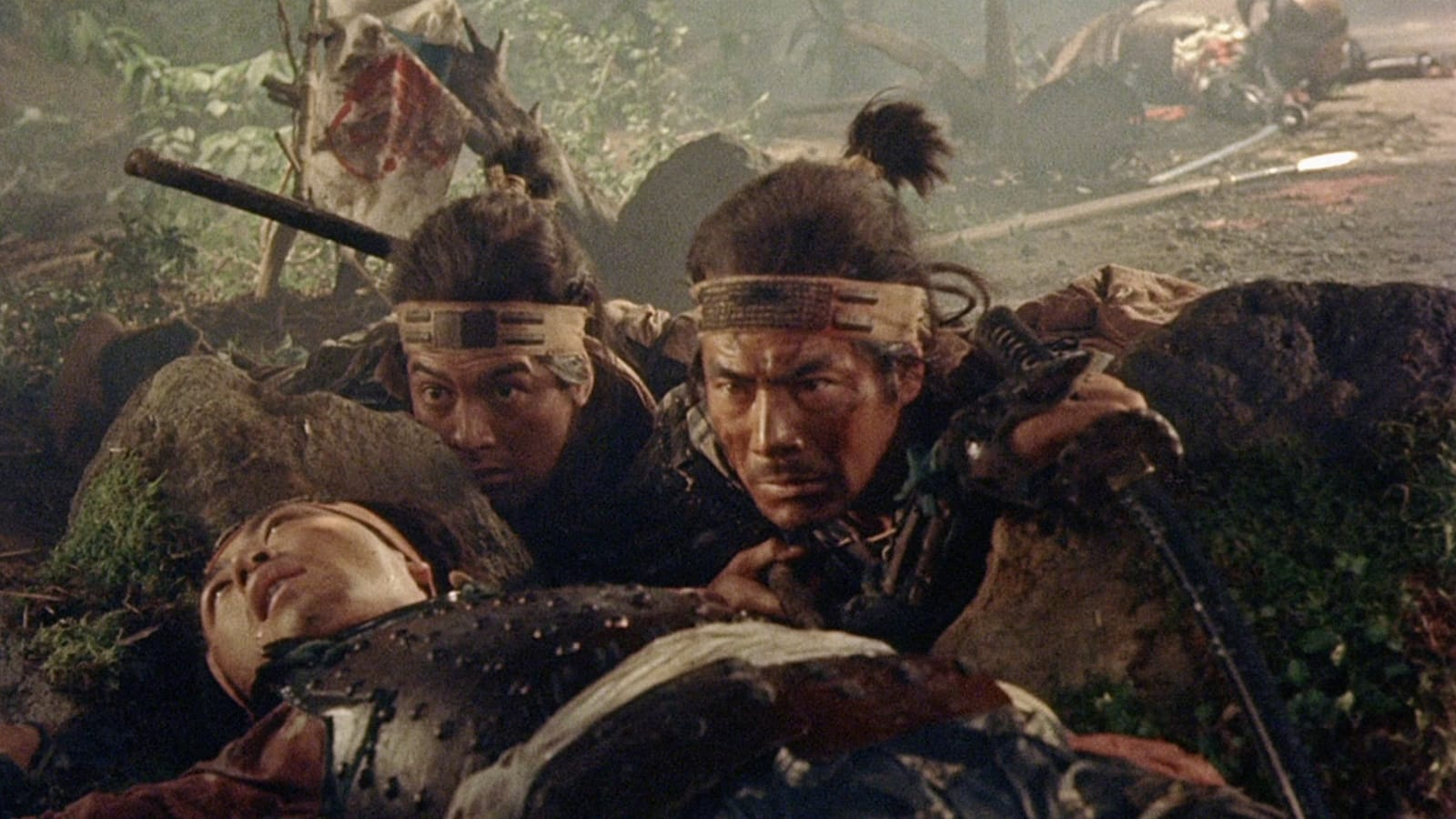Samurai I

Hiroshi Inagaki’s Samurai Trilogy, of which this release is the first part, was adapted from Eiji Yoshikawa’s epic novel Musashi Miyamoto, which has been called Japan’s Gone with the Wind. The comparison is valid, for the tale of the medieval samurai Musashi Miyamoto is played out against a background of civil war and wholesale destruction. The imposition of civil order after decades of warfare came slowly, and large numbers of armed men roamed the countryside, challenging each other in matters of skill and survival. Samurai I begins in the year 1600, with Ieyasu Tokugawa’s victory in the battle of Sekigahara, a three-day conflagration in which 70,000 people died. The real Musashi Miyamoto took part in that battle—on the losing side—and, against all odds, emerged as a major heroic figure from the chaotic years that followed.
Eiji Yoshikawa (1892–1962) took the facts of Musashi’s life and era and transformed them into Musashi Miyamoto, which originally appeared serially in the newspaper Asahi Shimbun from 1935 through 1939. Yoshikawa’s book was the subject of a 1942 three-part screen adaptation by Inagaki—like most wartime Japanese movies, this film is no longer extant. Inagaki returned to the book in 1954 with Samurai, this time in color and starring Toshiro Mifune. That same year, a rival production called Musashi Miyamoto—not based on Yoshikawa’s book, but covering the same historical incidents—emerged from the Toei studio, directed by Yasuo Kohata and starring Rentaro Mikuni (who plays Matahachi in Samurai). Another adaptation of Yoshikawa’s book appeared in 1960, the first of a six-part series by Tomu Uchida, entitled Zen and Sword.
All of these films were popular in Japan, but Inagaki’s version was the only one to find favor with western audiences—released in the United States, Samurai (aka Legend of Musashi) received the 1955 Academy Award® for Best Foreign Film. Apart from the charismatic presence of Mifune as Musashi, the opening part of the Trilogy benefited from Jun Yasumoto’s atmospheric color photography—arguably the best showcase Eastmancolor has ever had—and lighting by Shoji Kameyama.
There are similarities between Mifune’s roles in the Samurai Trilogy and in Kurosawa’s Seven Samurai—both men come from humble backgrounds, and neither is entirely understood by the members of the warrior class that they seek to join. In sharp contrast to Seven Samurai (in which detail and nuance may take precedence over plot), Inagaki presents the full scope of Yoshikawa’s enveloping story, which involves more than a dozen carefully drawn characters over a dozen years. And unlike Seven Samurai and its tale of a group of ronin who sacrifice themselves in a battle that will bring neither money nor fame, Samurai and its sequels embrace a far more traditional heroic story, played against monumental events and peopled by major historical figures, not the least of whom is Musashi himself.
The real Musashi Miyamoto (c. 1584–1645) was born Takezo Shinmen, the son and grandson of samurai. His career as a warrior began at the age of 13, and at 16 he was a participant in the battle of Sekigahara, on the side of the losing Ashikaga forces. Musashi became a master of two-sword combat, as well as a Zen master, writer, and painter. Musashi Miyamoto, as the first part of a trilogy, covers Musashi’s early life, from his youth as an ambitious aspiring warrior, into his years as an outlaw, up to the beginning of his search for enlightenment. The film does have elements that will be familiar not only to viewers of samurai pictures as a genre, but also to fans of American westerns, although it is not, as Bosley Crowther claimed in the New York Times, “an Oriental western.” Despite Samurai’s many action sequences and romantic subplots, its main thrust is toward the spiritual struggle within Musashi, and the dramatic high points lie in Musashi’s struggle for self-realization. With the exception of Henry King’s The Gunfighter (1950), no traditional American western has approached the moral and spiritual content of Samurai.
Ironically, for all of the film's success, ten years passed before Americans were able to see the other two follow-up installments in the Trilogy. During that time, Inagaki became well known for other films, such as The Rickshaw Man (1958), which won the Grand Prize at the Venice Film Festival, and The Forty-Seven Ronin (1962), while Toshiro Mifune became Japan’s most popular leading man. To this day, the Samurai Trilogy remains one of the most stirring examples of its genre.



